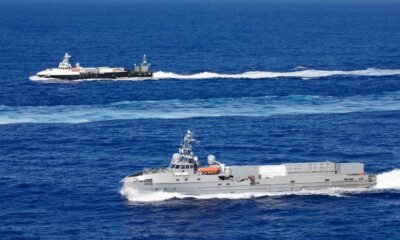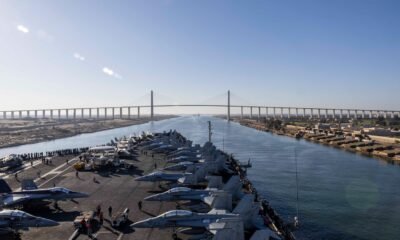All Navy Categories
U.S. Navy’s Fifth DDG Homeport Moves to Rota, Spain
The arrival of USS Oscar Austin marks a significant enhancement of the U.S. Navy’s capabilities within the regions governed by the U.S. European Command (EUCOM) and U.S. Africa Command (AFRICOM). Now assigned to Destroyer Squadron 60, under Commander, Task Force 65 and U.S. 6th Fleet, Oscar Austin’s presence is strategic.
“USS Oscar Austin’s arrival at Naval Station Rota bolsters our forward presence in Europe,” commented Vice Adm. J.T. Anderson, Commander of the U.S. 6th Fleet. “This ship provides our Allies with reassurance and stands as a robust symbol of the enduring partnership between the United States and Spain.”
The modernized USS Oscar Austin, featuring the latest Aegis Ballistic Missile Defense upgrade, is a crucial addition, enhancing deterrence and offering Allies protection against potential ballistic missile threats. The destroyer is the second U.S. Navy ship to transition its homeport to Naval Station Rota by 2026, joining with the latest Aegis BMD advancements.
“Arleigh Burke-class destroyers like Oscar Austin are multi-mission vessels,” said Capt. Alex Mamikonian, commodore of DESRON 60 and CTF 65. “Their capabilities in maritime security and warfare make them vital in maintaining ready forces amid growing complexities in the security environment.”
Oscar Austin left Norfolk, Virginia, on September 30, bound for Spain to enhance NATO’s full coverage and protection against the proliferation of ballistic missiles.
The decision to position destroyers in Spain originated from the U.S. European Phased Adaptive Approach, which President Obama announced in 2009. Since then, the U.S. has expanded its Ballistic Missile Defense capabilities, including efforts in increasing Forward Deployed Naval Forces-Europe from four to six ships and completing a second Aegis Ashore site in Poland.
Oscar Austin holds the distinction of being the first Flight IIA Arleigh Burke-class guided-missile destroyer and is named after Pfc. Oscar P. Austin of the United States Marine Corps. Commissioned on August 19, 2000, in Norfolk, the ship possesses extensive capabilities, such as defense against missiles, submarines, and surface threats, and can support two MH-60R Seahawk helicopters for anti-submarine warfare and other tasks. These destroyers can operate within various naval groups or independently.
Headquartered in Naples, Italy, U.S. 6th Fleet routinely conducts comprehensive naval operations alongside allies and interagency partners to advance U.S. national interests and ensure security and stability across Europe and Africa.




















